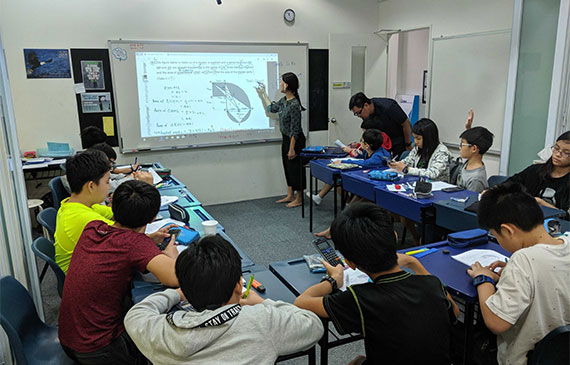Transitioning to secondary school isn’t just about changing classrooms –– it’s a separate ball game many parents and students underestimate.
Students face faster-paced academics and heavier workloads, requiring more independence and organisation. Their social landscape also changes, with new peer groups forming and old friendships potentially fading.
Let’s understand how these strategies play a crucial role in easing students into this transition.
1. Orientation programmes
Orientation programmes offered by secondary schools provide opportunities for your child (and you) to familiarise yourselves with the school’s layout, facilities, and academic expectations. You can meet teachers, administrators, and fellow students, fostering a sense of belonging and reducing anxiety about the unknown.
Additionally, orientation programmes often include informative sessions on school policies, extracurricular activities, and support services available, empowering families to make informed decisions and navigate the secondary school experience with confidence.
Be sure to take advantage of these events to ask questions, address concerns, and connect with other parents and students.
2. Teach time management
In secondary school, academic demands increase significantly. Effective time management ensures students can balance their academic workload, extracurricular activities, and personal commitments, leading to improved productivity, reduced stress, and greater academic success.
Start by teaching techniques such as creating day or weekly schedules. Encourage them to set specific, achievable goals for each day or week, whether it’s completing assignments, studying for upcoming tests, or participating in school events.
Emphasise the importance of prioritising tasks based on deadlines and importance, and show them how to break larger tasks into smaller, more manageable steps.
3. Explore different study methods
Given the content heavy subjects in secondary school, students often find themselves challenged by the amount of material they need to memorize. To facilitate learning and retention, students can explore creating their own study aids which can include mindmaps, tables or diagrams to help them remember and recall the concepts taught. For Mathematics, students can also create flashcards or summary sheets which they can refer to on-the-go. Additionally, regular weekly review and practice sessions are recommended to reinforce and revisit the concepts learned.
4. Group tuition programmes
Group tuition offers a supportive environment where students can ask questions, seek clarification, and collaborate with their peers. This creates a sense of community and belonging, which is especially beneficial for students who may feel overwhelmed or uncertain during the transition period.
At Oodles Learning, we offer the PaceUP programme. It is designed to provide students with targeted practice and exposure to various exam-based math questions.
Through a comprehensive curriculum including notes and tips for students, topic-based questions, reviews, and a diverse range of problems, PaceUP aims to further develop mastery of essential Math skills, enhancing students’ readiness for academic success in secondary school and beyond.

5. Encourage extra-curricular activities
Secondary school isn’t just about academics, it’s also about exploring new interests and finding a sense of belonging.
Encouraging students to participate in extracurricular activities can enhance their experience. Highlight the benefits of involvement in clubs, sports teams, and community service initiatives, such as developing leadership skills, fostering friendships, and exploring new interests.
Emphasise the importance of striking a balance between academic pursuits and extracurricular involvement, as these activities can enrich students’ overall well-being and personal growth.
6. Check in regularly
Regular check-ins with your child provide valuable opportunities to assess their well-being and offer support as they transition to secondary school.
Set aside time to discuss your child’s progress, address any concerns or challenges they may be facing, and guide them on academic and social matters.
Create a welcoming and supportive environment where your child feels comfortable sharing their thoughts and feelings. By checking in regularly, you can identify and address any issues early on, ensuring that your child feels supported and empowered to succeed in their new school environment.
Finally, attend school events, parent-teacher meetings, and extracurricular activities to stay informed about your child’s experiences and progress. Offer encouragement and reassurance, reminding your child that it’s normal to feel nervous or uncertain during this transition period.
Conclusion
The transition from primary to secondary school is a significant milestone in every child’s academic journey, one that requires support and guidance.
We hope that these tips and strategies will ultimately help students navigate this transition period with confidence and success.



